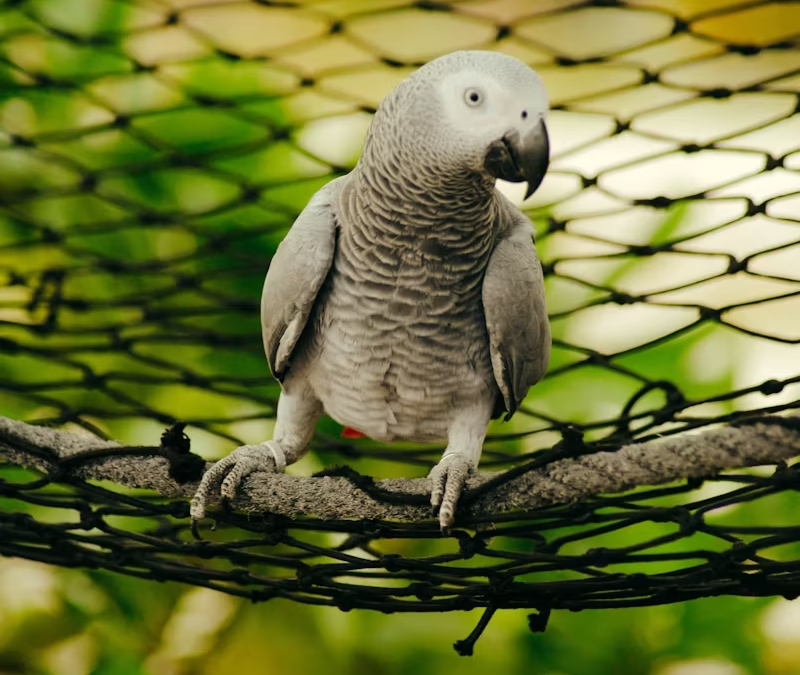How to Choose the Right African Grey Parrot for Your Family
How to Choose the Ideal African Grey Parrot for Your Family: A Complete Guide
African Grey Parrots are the smartest and most interesting pet birds in the world. Known for their amazing ability to mimic human speech and their affectionate demeanor, these birds are ideal pets for the ideal family. However, not all African Greys are created equal. Choosing the right parrot involves balancing your house, life, and the bird itself against its personality and needs. This book will help guide you into making the best decision when you choose to introduce an African Grey Parrot into your household.
1. Familiarize Yourself with the Two Subspecies of African Grey Parrots
The Two Main Subspecies of African Grey Parrots are:
• Congo African Grey (CAG): Slightly larger, measuring around 12–14 inches in length, with light gray feathers and a reddish tail. The Congo is more readily found in pet stores and among breeders.
• Timneh African Grey (TAG): A bit smaller, with darker gray plumage and a maroon-colored tail. Timnehs mature faster and are usually less shy or nervous compared to Congos.
The two subspecies are wise, chatty, and loving, but have distinct temperaments. Each bird must be met and interacted with on its own and its behavior needs to be assessed before a choice is made.
2. Think About Your Family’s Lifestyle and Environment
African Greys require time, attention, and mental stimulation. Keep the following in mind:
• Do you or someone living in your home have time to spend daily with the parrot?
• Is your home typically quiet or noisy?
• Are there young children or other animals?
• Can you commit to a parrot that will likely live 40–60 years?
African Greys are sensitive and can readily become stressed by noisy or unpredictable environments. They do well in quiet homes where they can become closely attached to one or two individuals and have a consistent routine.
3. Select a Baby, Juvenile, or Adult Parrot
Each age has its pros and cons:
• Baby (hand-fed chicks): Friendly to bond with, more adaptable, but require excellent care and socialization.
• Juvenile (under 2 years): More independent than babies but still impressionable and trainable.
• Adult (2+ years): May already have some training or speech skills, but could come with behavioral habits—both good and bad.
If you’re new to parrots, a hand-fed baby or well-socialized juvenile might be easier to train and integrate into your family.
4. Choose a Healthy Bird
When selecting your parrot, health should be a top priority. Look for:
• Bright, alert eyes
• bald spots on cleaning feathers
• Active, curious behavior
• Clean vent area (no diarrhea or staining)
• Normal breathing, no wheezing or clicking
Ask the breeder or seller about the bird’s medical history, diet, and any current illness. Good ownership will be upfront about it and provide health records or even a recent vet visit.
5. Evaluate the Bird’s Personality and Behavior
As with humans, each parrot has its own personality. Learn about the bird first before making a decision.
• Is the bird curious or shy?
• Does it seem aggressive or loving?
• Is it talkative or quiet?
Some African Greys are naturally more talkative or social, but some are shy and take longer to become friendly. A soft, well-adjusted bird is usually the best option for families, especially those with minimal experience with parrots.
6. Buy from a Reputable Breeder or Rescue
Avoid buying parrots from chain pet stores, where parrots might be ill-socialized or mistreated. Instead, look for:
• Reputable breeders who hand-raise and socialize their parrots when they’re young.
• Rescue centers that rehabilitate and re-home parrots. You might find your perfect adult parrot looking for a second home.
A good breeder or rescue will let you come see, ask questions, and spend time with the bird before bringing them home to adopt or purchase.
7. Prepare Your Home Prior to Bringing Home Your Parrot
After you’ve chosen the right African Grey, prepare your home:
• Cage: Adequate size for flight and play (minimum 36″x24″x48″).
• Toys: To challenge the bird mentally.
• Food: A well-balanced combination of pellets, fresh vegetables, and fruits.
• Safe space: No toxic plants, fumes (e.g., Teflon), or easily chewed hazards.
Also, plan for socialization and training time each day, especially in the first few months.
Final Thoughts for How to Choose the Right African Grey Parrot for Your Family
Choosing the ideal African Grey Parrot is an investment in the long term and should never be taken lightly. Consider your way of life, the bird’s age and temperament, and always prioritize health and integrity. With a good fit, your African Grey will be a charming and brilliant addition to your family for many decades to come.

